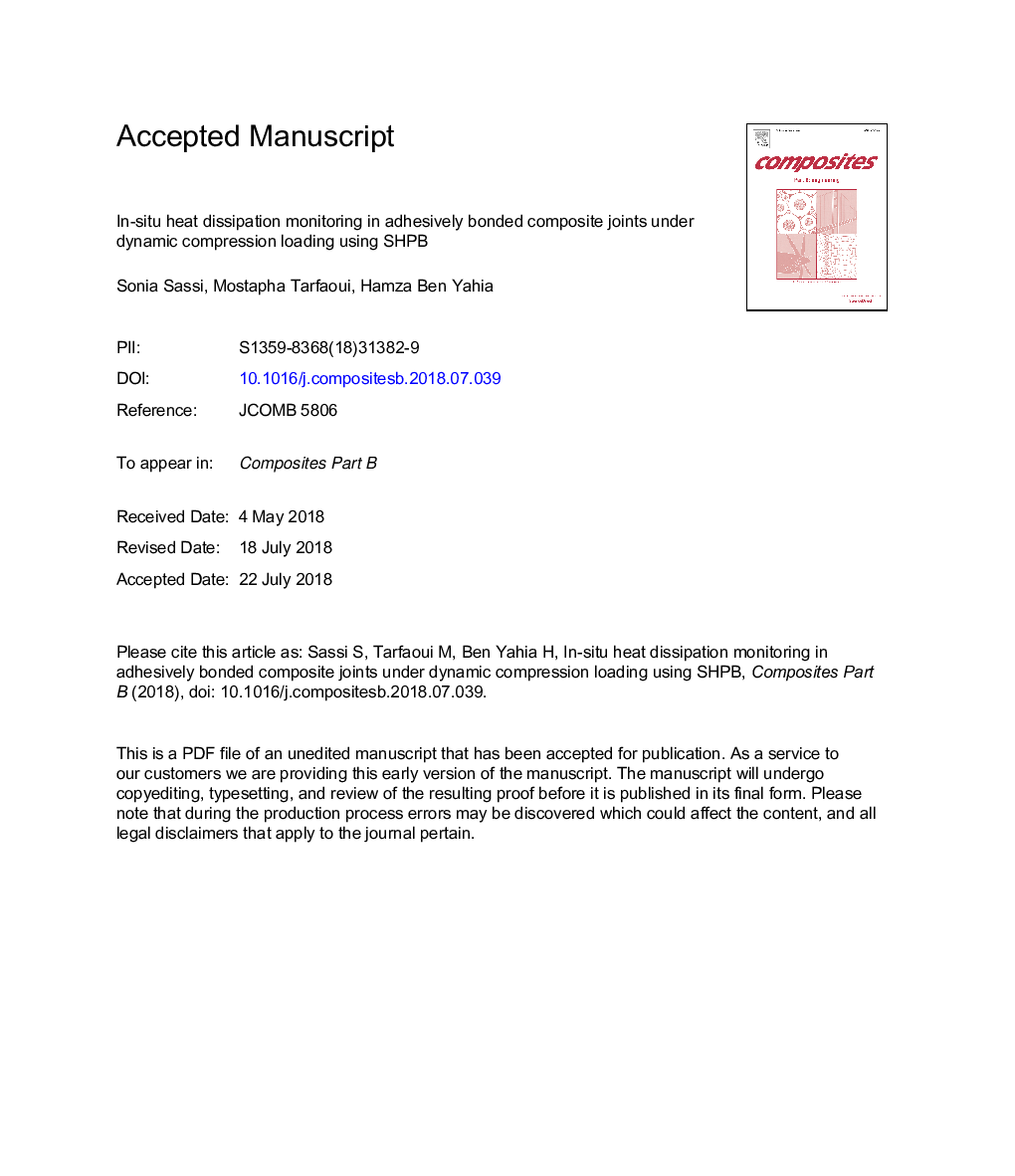| Article ID | Journal | Published Year | Pages | File Type |
|---|---|---|---|---|
| 7211730 | Composites Part B: Engineering | 2018 | 33 Pages |
Abstract
It is well known that the mechanical energy transforms partly into heat under impact and this heat can affect the material integrity. In this research, heat generation in adhesively bonded composite joints during dynamic compression tests had been studied because of their frequent use in naval applications. Experiments were designed to identify the mechanisms that lead to the heat generation and to measure the temperature rise in the specimens under various loading conditions. Compression Split Hopkinson Pressure Bars (SHPB) coupled with a high-speed and infrared cameras were used for real-time monitoring of change in dynamic parameters, damage kinetics and heat generation in the samples with respect to variation in strain rates. In addition, small thermocouples were also attached with the specimens and inserted at the heart of the material for assessing the change in temperature. During the experiments, significant temperature rise was observed, primarily at high strain rates. Mechanical, thermal and high speed photographs results altogether indicate that the rise of temperature was mainly due to damage in material. Significant variation in the heat generation by changing strain rate was observed. This variation was explained as different damage modes were activated at each strain rate. These results have shown that thermomechanical coupling must be taken into account when developing damage models under impact.
Keywords
Related Topics
Physical Sciences and Engineering
Engineering
Engineering (General)
Authors
Sonia Sassi, Mostapha Tarfaoui, Hamza Ben Yahia,
